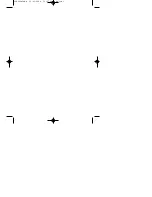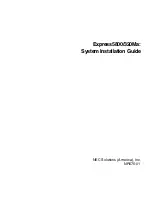
118
the system down. A forth disk could be added to migrate to RAID level 6. It is only possible to migrate to a
higher RAID level by adding a disk; disks in an existing array can’t be reconfigured for a higher RAID level
without adding a disk.
Online migration is only permitted to begin, if all volumes to be migrated are in the normal mode. During
the migration process, the volume sets being migrated are accessed by the host system. In addition, the
volume sets with RAID level 1, 1E, 10, 3, 5 or 6 are protected against data loss in the event of disk failure(s).
In the case of disk failure, the volume set transitions from migrating state to (midegraded)
state. When the migration is completed, the volume set transitions to degraded mode. If a global hot spare
is present, then it further transitions to rebuilding state.
•
Online Volume Expansion
Performing a volume expansion on the controller is the process of growing only the size of the latest
volume. A more flexible option is for the array to concatenate an additional drive into the RAID set and then
expand the volumes on the fly. This happens transparently while the volumes are online, but, at the end of
the process, the operating system will detect free space at after the existing volume.Windows, NetWare and
other advanced operating systems support volume expansion, which enables you to incorporate the
additional free space within the volume into the operating system partition. The operating system partition
is extended to incorporate the free space so it can be used by the operating system without creating a new
operating system partition.
You can use the Diskpart.exe command line utility, included with Windows Server 2003 or the Windows
2000 Resource Kit, to extend an existing partition into free space in the dynamic disk.
Third-party software vendors have created utilities that can be used to repartition disks without data loss.
Most of these utilities work offline. Partition Magic is one such utility.
High availability
•
Global/Local Hot Spares
A hot spare is an unused online available drive, which is ready for replacing the failure disk. The hot spare is
one of the most important features that RAID controllers provide to deliver a high degree of fault-tolerance.
A hot spare is a spare physical drive that has been marked as a hot spare and therefore is not a member of
any RAID set. If a disk drive used in a volume set fails, then the hot spare will automatically take its place and
the data previously located on the failed drive is reconstructed on the hot spare.
Dedicated hot spare is assigned to serve one specified RAID set. Global hot spare is assigned to serve all
RAID set on the RAID controller. Dedicated hot spare has higher priority than the global hot spare. For this
feature to work properly, the hot spare must have at least the same capacity as the drive it replaces. The
host spare function only works with RAID level 1, 1E, 3, 5, 6, 10, 30, 50, or 60 volume set.
The “Create Hot Spare” option gives you the ability to define a global/dedicated hot spare disk drive. To
effectively use the hot spare feature, you must always maintain at least one drive that is marked as a global
hot spare.
Important:
The hot spare must have at least the same capacity as the drive it replaces.
Summary of Contents for ES208X12HP
Page 1: ......








































